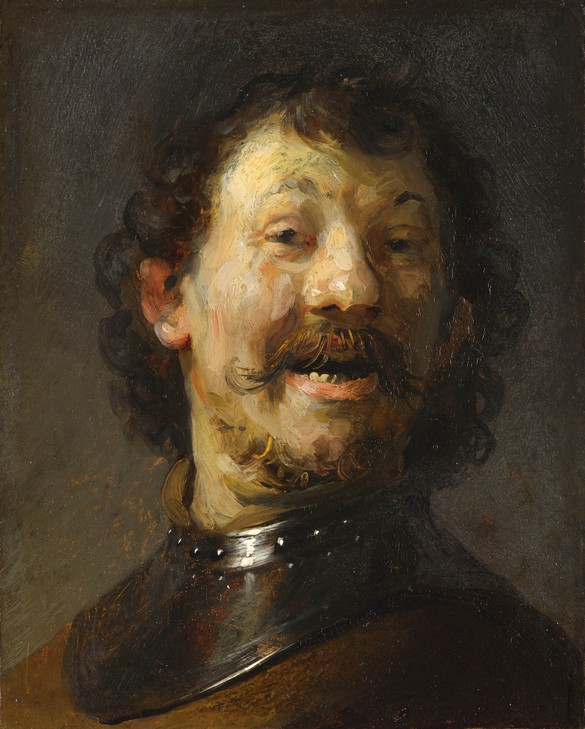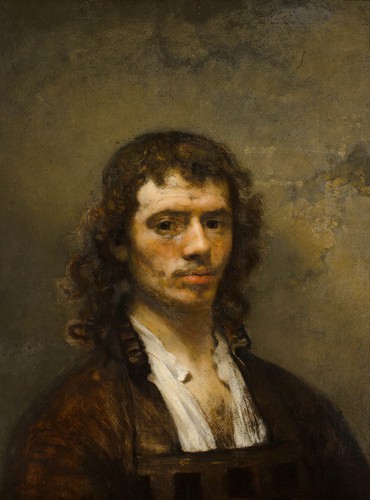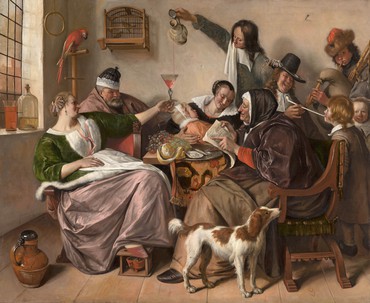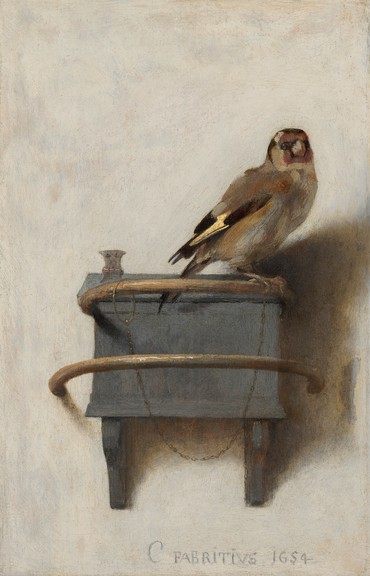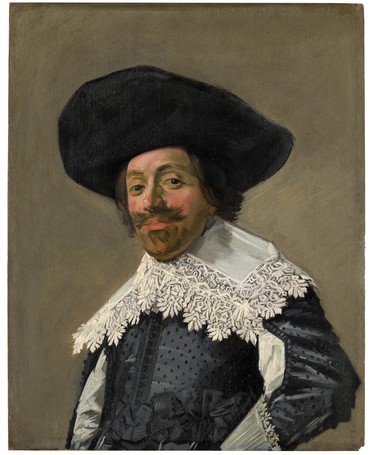
Benjamin Moser is a writer based in the Netherlands. He is the author of Why This World: A Biography of Clarice Lispector (2009) and of Sontag: Her Life and Work (2020), for which he won a Pulitzer Prize. His new book, The Upside-Down World: Meetings with the Dutch Masters, was published in October 2023.

When not writing about books or art, Josh Zajdman is doom-scrolling Instagram or working on his novel.
Josh ZajdmanWhen I first heard about this book, I was surprised. I was expecting another amazing biography of a misunderstood literary figure. When you were done with your Sontag biography, how did you transition to this very different subject?
Benjamin MoserOnce you finish a book, you fall into a void of despair about what’s next—especially a book like the Sontag biography; it involved so many years of research and work. And everybody said, “Oh, who’s the next big female intellectual?” But I don’t want to just keep doing the same thing. When I moved to the Netherlands, over twenty years ago, I started making notes on the things I was seeing in the Dutch museums. I’ve been doing it and doing it, but mainly just for myself, since it was really a very personal attempt to figure out where I’d ended up, what this place was. I didn’t feel like there was a place for me to start getting to know this culture but I felt the appeal of it, and more than the appeal, the obsession it can spawn. So in a sense I’ve been writing this book for all those years, and it felt like the logical next step for me.
JZThroughout the book, you ask certain questions or present maxims for how to see and engage with art and life. “Why do we make art and why do we need it? What is beauty and how does it relate to taste? How in the world are we supposed to live?” When you think about those questions, has your relationship to them changed over time?
BMI think so. I think the reason that the technical, art-historical, or scientific approach to art is ultimately unsatisfying—at least to me, and I think to most people—is that it doesn’t get anywhere close to what you actually feel when you look at art. It’s not just about the frame, and the palette, and the formal composition—all of those things are interesting, but there’s something else. If you really look at it in the way that I did, art becomes addictive. I was young, and coming into this totally foreign culture, trying to figure out who I was, what makes me tick, and what makes us tick as people. It’s very hard to live, even if you take the path of least resistance. So looking at these questions through art was something that I really wanted to share with other people, inviting them to examine their affective responses—intimidation or terror or excitement or all of the above. There are these incredible tensions, and there should be, because art can kill you. You can’t play around with art. It’s dangerous.
JZYou write, “As with Dante, Shakespeare and Bach, you cannot rush an acquaintance with Rembrandt.” And later on, you say, “It is beautiful, and it is also excruciating, the hallmark of Rembrandt.”
BMRembrandt dramatizes this the most shockingly. I think that when these names become perfumed and ringed with this aura of sanctity that most great painters or artists have, you don’t fully look and see that what you’re seeing is fucking scary. This is not something you even want to look at, not really, because if you do, it might take you somewhere you might not want to be going on a Thursday afternoon when you’re walking through this museum.
It was so intimidating to write about Rembrandt, especially in the Netherlands, because there’s so much written about him. Like Shakespeare if you live in London. So I tried to find another way to write about him that I think got at this emotional discomfort that he creates, even though he’s sanctified in Dutch culture. When they start digging through the archives and figuring out that he wasn’t such a nice person, that raises another question: does the artist have to be such a nice person? People in other societies—and in other times even in our own society—didn’t really care about the artist’s personality or even their biography. And I think we should care about it, in a way, to the extent that it shows something about him, which is that he was a man of extremes. We don’t love Rembrandt because he was our friendly neighbor, just a regular person. He was not a regular person. We love him because he’s this exaggerated kind of superhuman, a sort of art monster.
JZWho’s comfortable going there . . .
BMWell, I don’t know if he’s comfortable, but he’s going there.
JZWell, do we need to talk about cancel culture now? [laughter] Is this debate about art versus artist especially relevant?
BMIt is. That’s such a contemporary term, cancel culture, but this always existed in certain ways. I’m reading a biography of Spinoza right now, a contemporary of Rembrandt—he lived in a world where, in terms of religion and “cancel culture,” we cannot imagine how restricted people’s abilities to speak and to think were, and this was in one of the freest countries in Europe. You could lose your head for denying the Holy Trinity. It’s really hard to imagine how unfree people were.
Still, in my biographies, I do invite, in a certain way, judgment. I put my judgments out there in full view and people can make of them what they will. Because I think that one way to bury somebody, and to make them boring, is to smooth out all the rough edges. I like rough edges. They’re where the drama is. I want the reader to wonder why they did what they did, what they were thinking, who they really were, why they weren’t nice to their wife or husband or lover, why they drank too much. Those are the kinds of questions that keep someone alive, that keep people from turning into street names or statues. The worst thing you can do to an artist isn’t to criticize him, it’s to make him boring.
JZThe book unfolds through biographical sketches. By the end of each one, you have a look at the whole person. More broadly, you trace a through line across all Dutch art. What is it in a nutshell?
BMWell, the Dutch invented so many subjects that weren’t considered subjects. They invented so much of the way we see the world. One of these nonsubjects was a family in their house, you know, walking the dog, talking to the neighbor. That hadn’t been considered a subject. For the Italians, art was always what was above real life, something elevated, sacred, not for the living room wall.
Also, the size of their paintings, their intimacy. There are exceptions, obviously, but you could probably pick up, I don’t know, 80 percent of Dutch paintings and walk down the street with them. Most of the great Rembrandts and Vermeers you could just take off the wall. And that gives this art a kind of apparent readability. It shows a mother and a child; we think we know all about mothers and children and that they’ve always been the same thing. But of course, they really haven’t. In Amsterdam during the Golden Age, four pandemics killed 10 percent of the population within one century, so that’s one in every generation—huge swaths of the population just died. That’s not counting the normal infant mortality, not counting the wars. And you know that’s also the miracle of something like a Vermeer, how peaceful it looks, how he just tightened that frame so that you only see this one little thing. You don’t see the cholera next door, or the dead babies, or the shit in the canal, or the war with the king of France. You just don’t see it at all.
JZBut at the same time, you feel like you’re seeing all of something. That room is so beautifully and fully rendered that you think there can’t be life outside of it.
BMYeah, you think, “Oh, what a peaceful country. What a lovely place.” And it was; I mean, it was better compared to everywhere else. In the book, I’m always trying to show you what you think you’re seeing and then trying to make you see it a little bit differently.
JZWould you say there is a unique experiential quality to these works?
BMI think you want to not be anesthetized. Even if you’re looking at Rembrandt’s dead criminals, or scenes of terror and sacrifice, as much as you’re looking at a beautiful Vermeer, you want to be taken out of that ordinary thing. So that’s why I resist the idea that Dutch art is about everyday life; it’s actually the opposite of everyday life. It’s this thing that, in a way, elevates your life, makes your life worth living.
JZBetween you and Donna Tartt, all eyes are on Carel Fabritius. He died young and tragically. Is it just the Jim Morrison thing, died young and full of talent?
BMHe was very good-looking, too. There’s this one self-portrait where he looks completely gorgeous in a way that you can’t imagine. We don’t know what a lot of these people looked like; we don’t know what Vermeer looked like. Rembrandt was never particularly good-looking. But Fabritius was obviously a genius. We can tell that from his few remaining works, of which there are only twelve.
JZThat’s wild.
BMIt’s a third of the number of Vermeers. It also raises a question about ancestry and genealogy. There’s Rembrandt and then you get to Vermeer through Fabritius, who was Rembrandt’s student and Vermeer’s teacher. But how did that transmission happen? And how did Fabritius make these pictures so magical? Because they are. If you just sit on one of those benches in the center of the gallery at the Mauritshuis in The Hague and watch people, they might read the label, they might not read the label, but if you sit there long enough, you start noticing the patterns: it doesn’t matter if someone is bored or texting their girlfriend or has to go to the bathroom or is hungry or their feet hurt—every one of them will stop in front of The Goldfinch [1654]. I don’t know what they see.
JZYou write, “After Cervantes, a novel could be about anything. It could also be about nothing. After Vermeer, a painting could be too.” Did they just blow everything open and we’re still in it?
BMOh, we’re still in it. Just as we’re still in the world of the novel. It’s interesting how this happens. The Dutch, or at least a lot of them, become Protestant, and a great deal of Catholic religious art is destroyed, and the Protestants don’t encourage religious art. But since they’ve always had lots of painters, these people have to find something else to do. Painters begin painting whatever they want. If you want to paint a little bird and call that art, you can. They paint landscapes, they paint still lifes, they paint portraits. You think, “Of course people always painted pictures of famous people.” Well, actually they didn’t. Portraiture wasn’t reinvented until the fourteenth century. Someone had to think of that. There’s so much of this that we think of as obvious but it’s not obvious.
JZOne tidbit that really surprised me was the almost complete omission of homosexuality in Dutch art.
BMWe know that there were gay people, because we can find descriptions of people being persecuted for it . . . and it’s safe to assume that homosexuality was as common then as it is any time. But though the Dutch painted absolutely everything, there are zero—it’s not that there are only a few—there are zero depictions of anything that could even be interpreted that way. When I discovered Ruisdael’s story—he never married, not that that means anything—and looked at his paintings, there are a few little indications, maybe a couple too many naked guys in a few of his pictures, you know, and you think, “Huh.” And there is a sort of sensibility in Ruisdael that I found that made me wonder. It’s fascinating. That was apparently something that just couldn’t be touched.
JZTalk to me about Instagram.
BMInstagram started for me with my Sontag biography, because I was reading all this photography theory. There are a few essays that everybody reads: it’s Sontag, it’s [Roland] Barthes, it’s Walter Benjamin. You read these essays and you can bullshit your way through any discussion of photography theory. But I realized I’d never taken a picture in my life. I started trying to take one good picture a day just with my phone. And then I realized how incredibly hard it is. It really helped me to understand just how constructed photographs are. You realize, getting back to this thing about daily life, is it daily life? No, it’s not. It’s somebody’s highly, highly edited version of daily life. In painting, it looks like a maid with a broom sweeping the floor, but it’s actually just as much of a construction.
JZYou write about the concept of “wall power.” What is it?
BMWall power is museum jargon, but it means something that even your dog would respond to. It’s a quality that the Greeks called “charisma,” from which we get the word “grace.” It implies something given by God, divine or connected to the divine. Once a painting is a Vermeer, even if it’s ugly everybody’s going to be really excited about it because it’s a Vermeer. But they’re not responding to the actual object. They’re not staying in the work, which is almost irrelevant in the shadow of this great name. They’re responding to the name, they’re responding to the reputation, they’re responding to the price. But real wall power is something else, and it’s very rare. My conclusion is that what we see as wall power is really the reflection of the person’s soul that they put into an artwork. So, when we see this bird by Fabritius, we’re actually seeing Fabritius, or we’re feeling something of him.
JZSticking with thematic approaches, let’s talk about late style. Is it a compression of talent instead of age and attenuation? What do you think it is?
BMI started thinking about it when I was writing about Clarice Lispector, who died pretty young. At forty-six, she fell asleep with a cigarette and burned her whole body, basically. From one night to the next, she became an old lady, someone who had trouble walking, who was in a lot of pain, who needed somebody to help her get out of bed—you know, an old person, even though she was forty-six and then died at fifty-six. But in those last few years that were left to her she created this unbelievable series of masterpieces. And maybe it had something to do with the freedom that comes from just not giving a shit anymore, and knowing that your time is so short that you have to produce, you have to make it count. You don’t have time to waste. I write about Frans Hals: you see him losing his mind in this way that’s like fireworks exploding. This is somebody who was always a genius, but those last paintings are so shocking and so magnificent. I’ll never forget the first time I saw those paintings, the Regents and Regentesses [c. 1664] in Haarlem. I just could not believe it. It has a kind of ambition and scale and grandiosity that you would associate with Italy but it’s just the last breath of a great genius. And seeing that is, whoo, it’s exciting.
JZFrom late style to mortality isn’t a leap. You write a lot about the latter and how half of your life has been spent abroad.
BMMore than half, isn’t that weird?
JZHas the combination of age and living abroad made you more reflective?
BMI’ve enjoyed growing older in a lot of ways, because I’ve become smarter, I’ve become more experienced. I’m less of an idiot than I used to be in all these ways. It doesn’t happen to everyone. I feel if you can make it to my age and be pretty much okay in life, that’s a lot more than a lot of people can say. My last book was dedicated to a great childhood friend who died when she was in her late thirties.
On the other hand, middle age can also make things less exciting. Living in the Netherlands is not that exotic anymore. It’s not that interesting in a lot of ways. The reality of my living in Europe is that I go get dog food at the grocery store sometimes, and my computer doesn’t work and I have to call the guy to fix it. That’s my life, but every once in a while, I like to remember the thrill that Europe represents for a kid from Texas, and how completely strange it was to see these cathedrals and palaces and museums. It’s important not to grow jaded, and this can happen. When you come abroad, you can lose a sense of who you are. Nobody knows anything about you. And people, as I say in the book, don’t care about foreigners. I decided that I was going to look at that as freedom rather than as a loss. All of this experience is well reflected in the years that I’ve spent walking around museums. If you look enough, you see in art all these questions refracted through all these other people. I felt their companionship. I really did. I feel like they’re friends. Especially if I’m not in Holland, I’m in Malaysia or something and all of a sudden you see Frans Hals hanging on the wall.
JZ“Hey buddy.”
BMYeah, exactly. It’s weird how that happens.
JZI was taken by the line “To delve into art is to delve into history.” That seems to be the guiding force of this book.
BMYou can look at art so many different ways. You can look at it from the structure of the canvas. You can look at who bought and sold a work. But you can also look at how the human mind has evolved. It has expanded and opened through artists. People often think that art reflects science. In fact, art often comes before science, it comes before politics, it comes before religion, it comes before fashion, and it’s the thing that actually drives all of those things. History seems to be this big thing and art history this little subset, but in fact, art history is the history of how people actually live and think. It’s the history of how people thought and expanded their minds, to incorporate things like showing other people in different ways, showing animals, showing daily life, showing different parts of the world, whether it’s a landscape or whether it’s a piece of fruit. You can see all of human history through art.
Benjamin Moser, The Upside-Down World: Meetings with the Dutch Masters (Liveright, 2023)
